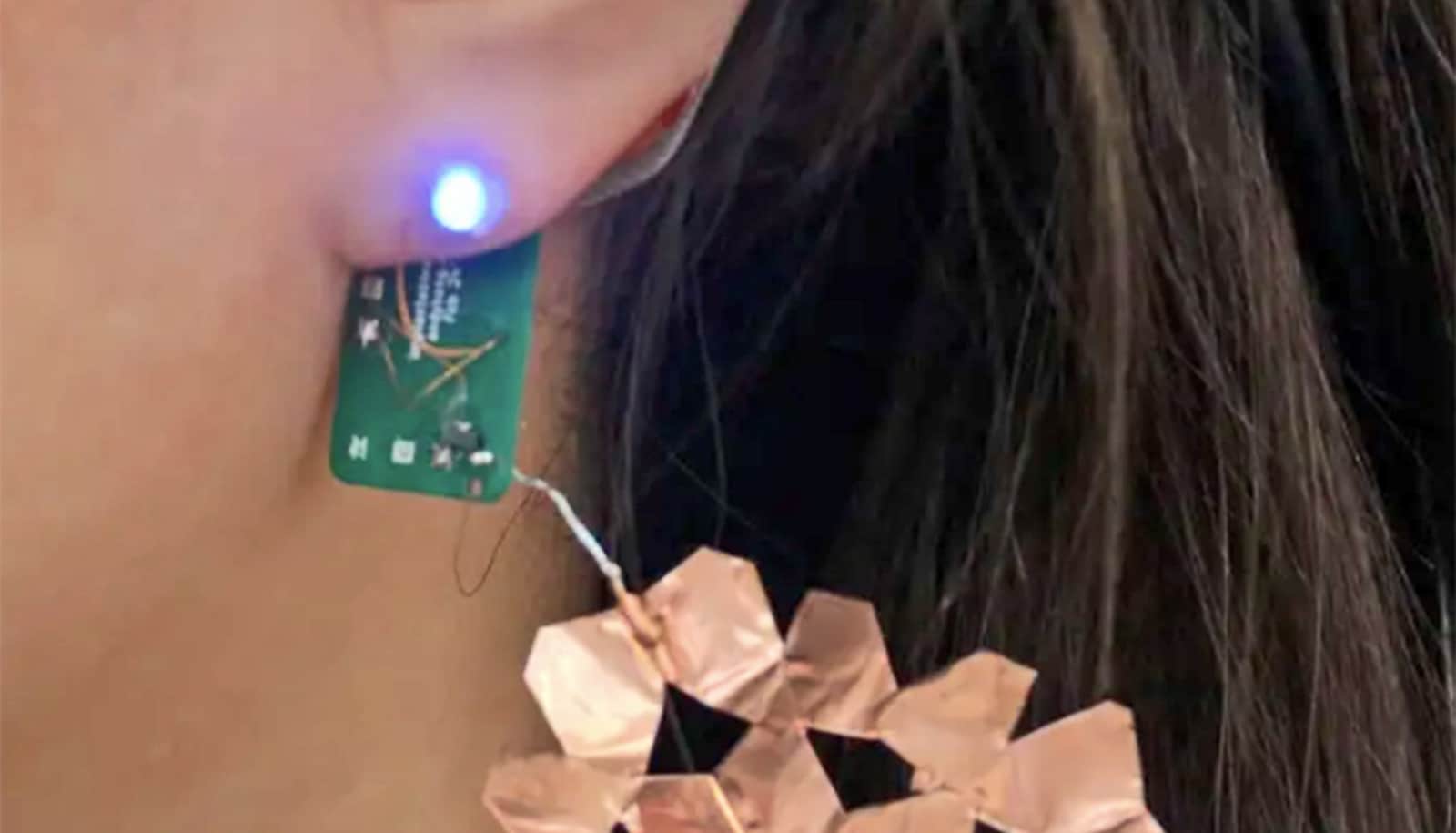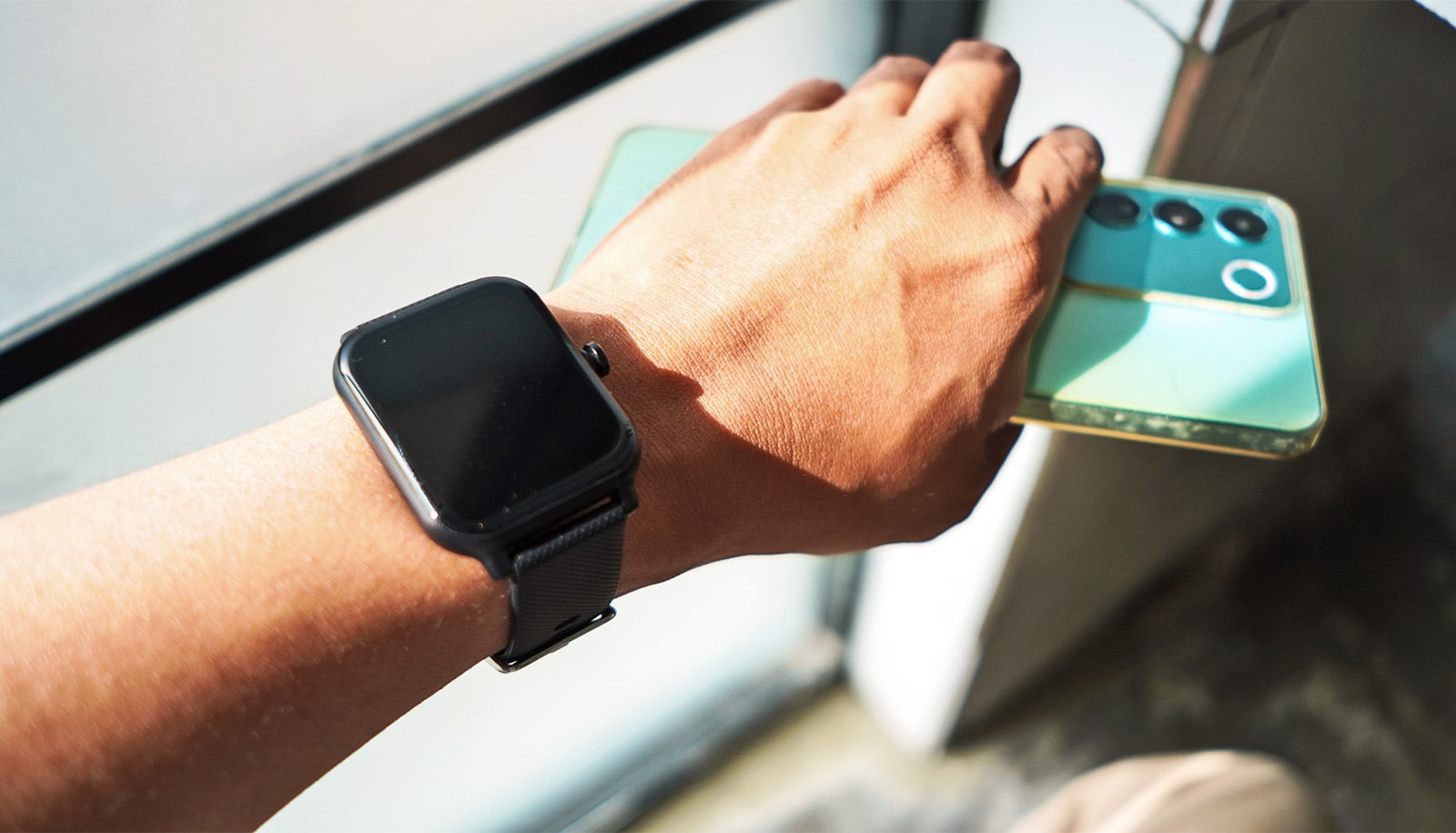A pair of “smart socks” might offer a solution to the limitations of video consultations with physiotherapists and other specialists, report researchers.
Consulting via video saves patients’ time and money, as they no longer have to endure the sometimes hours-long journey to hospital. The technology has its limitations, however—particularly the two-dimensional view of the patient available to the physiotherapist.
The socks are essentially a piece of wearable technology that give physiotherapists real-time information on a patient’s lower body movements.
The invention was motivated by Aggarwal’s observations of physiotherapists at the Royal Children’s Hospital, as well as her father’s experience when he injured his ankle in his small hometown in India and was unable to seek professional treatment due to the cost involved in traveling to the nearest big city.
Subtle differences
“Physiotherapy is all about movement,” says Deepti Aggarwal, a PhD candidate at the University of Melbourne School of Engineering. “To assess patients’ recovery, physiotherapists must be able to closely observe the subtle differences in their movements.”
Aggarwal watched physiotherapists help patients with chronic pain recover their movements—both in face-to-face and video consultations.
“What was lacking in video consultations was the ability to observe the subtle differences in patients’ lower limb movements, such as shifts in weight distribution and range of foot movements,” she says.
“This meant that physiotherapists had limited understanding of the patient’s actual recovery, leading to less specific treatment. The physiotherapists were also reluctant to try out new exercises with the patients over video.”
So Aggarwal spent six months creating the smart socks, which let physiotherapists better assess and treat patients with lower limb issues during video consultations.
The socks have three sensors that capture information about weight distribution, range of movement, and foot orientation for the patient’s lower limb movements. The socks work with a web-interface that presents the captured information to therapists using foot sketches.
During a video consultation, the patient wears the socks—called “SoPhy”—and performs exercises that they would do in a face-to-face session such as raising onto their tip-toes, squats, and toe curls.
Better assessments
In a trial at the Royal Children’s Hospital, the socks increased the therapists’ confidence in their assessments by providing movement related information that wasn’t otherwise visible. And patients received real-time feedback on the little changes in their movements.
“They got a better understanding of what they should be doing instead of what they were doing, which made the therapy goals simpler and more achievable for them,” Aggarwal says.
Tiniest wearable sticks on your nail to monitor UV rays
The information also helped physiotherapists correct their assessment when visual cues were misleading, allowing them to adapt the exercises based on the patient’s condition.
“Often, without realizing it, patients will apply different tricks to not bear weight on the injured leg, such as pushing through their toes or heels,” Aggarwal says.
“These movements are so subtle that they can be missed by the naked eye, even in a face-to-face consultation. The SoPhy visualization clearly highlights whether the patient is bearing any weight on the injured leg and in which parts, such as in the front, side or on the heels of the foot.”
SoPhy enhances discussion of patients’ recovery over time and the planning of new therapy goals, says Mark Bradford, a physiotherapist at Royal Children’s Hospital who was involved in the trial. “It gives me more clarity about what’s happening with the patient right now and helps me to decide the best treatment—showing patients exactly what to do, and how.”
These kinds of technologies aren’t a replacement for face-to-face consultations; but do offer the next-best solution to support remote patients in critical situations such as those with severe pain and mobility issues, Aggarwal says.
Telemedicine and school nurse combo cut asthma ER visits
“They can also enhance face-to-face consultations by providing another source of clinical information to help physios make the best assessment of the patient’s needs, and provide the most effective treatment plan.”
Source: University of Melbourne



